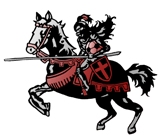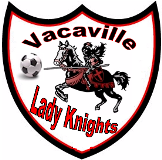-
A means of contacting
everyone without one person doing all of the calling. (Phone
chains)
-
Choosing a team
administrator, someone to handle all of the details.
-
Complete all paperwork
required by your league or club.
-
Discuss the laws of the game.
-
Carpool needs.
-
Training and game schedules.
How you feel about starting and ending on time, what your
attendance expectations are, what you think is a good excuse
to miss training.
-
What each player should bring
to training: inflated ball, filled water bottle, soccer
attire, shin guards cleats or sneakers.
-
Most importantly, your
philosophy about coaching U-11 players. Let them know that
everyone plays; that the game does not look like the older
player's games; that you are there to ensure that their
player is safe and has a good time, as well as learn about
soccer.
-
What your expectations for
them is during game time. How do you want them to cheer? Do
they know that they should not coach from the sidelines?
-
Above all, try to enjoy
yourself. If you do they probably will too
THINGS YOU CAN EXPECT
Some coaches say that the 10 and
11 year-old players are beginning to "turn the corner" and
starting to look like real soccer players. However, games are
still frantically paced and unpredictable for the most part.
These players are starting to find out how much fun it is to
play the game skillfully, but they will still stop and laugh if
the referee gets hit in the backside with the ball during a
game. Some other things that we can expect when working with
this aged player are:
-
They start to understand
offsides, but still forget themselves when the goal is in
front of them.
-
They will really beat up on
each other during practice... especially boy's teams.
-
During a game, the parents
will scream out "HAND BALL" or "COME ON REF, CALL IT BOTH
WAYS" at least fifteen times.
-
They might cry after the game
if they loose, but will forget it if you ask them if you
want to go out for burgers and fries.
-
You might actually catch them
practicing on their own without you telling them to do so.
-
Their parents are telling
them to do one thing during the game, you are telling them
another thing, but what they end up doing might be what
their friend is telling them to do.
-
You will see a pass that is
deliberate. You might even see a "back pass".
-
You will see your first $100
pair of cleats during practice. They will call the other
team bad names... really bad names.
COACHING RATIONAL
Some of the players that are
playing as U - 11's are seasoned veterans of the youth soccer
scene. Some of them may have already been involved in traveling
to play in tournaments. As a result, some of them might be very
nervous about the whole process. It is our job to keep things in
perspective for these young, developing players. True, some of
them are becoming quite skillful and are seeing how fun it is to
play the game when they can really control the ball. However,
many of them are still learning the ropes. Even the more
experienced players need to have the game be fun!!!
Emphasis is still placed on
having players learn how to control the ball with his/her body,
but now, they need to find themselves in more game-like
situations. Training is more dynamic and starting to have
players make simple, basic decisions such as "Which way is there
more space?" or "Who should I pass to?".
Following are some more items
that a coach of U-11 players should consider:
-
Use small sided games as the
main teaching vehicle. Not only will they get more touches
on the ball, but the full 11-a-side game is still too
complicated for them to understand.
-
How we group players during
training takes on even added significance because of the
wide margins of ability levels. We need to mix players up
often.
-
Stretching is becoming more
important, along with a good warm-up. Since the game is
faster, make sure that they also have good shinguards.
Safety and preventive measures take on added significance.
-
Training twice a week is
plenty. Sessions need not go longer than one hour, fifteen
minutes.
-
They should all come with
their own size #4 ball. In fact, they still need to be
encouraged to play with it by themselves.
-
Put them into competitive
environments as much as possible. This will not only keep
them focused, but, it will allow the game itself to teach
them. It also will keep things fun for them, and allow you
to deal with issues such as 'winning' and 'loosing' which is
now a very big concern for them.
-
Now it is possible to teach
them positional play with the expectation that they will get
it some of the time. However, it is absolutely necessary
that you do not allow players to specialize in any one
position. They need to learn basic principles of the game,
first. Having them play all of the positions is best for
their individual development. Remember, our first
responsibility is to develop players and let them have fun.
-
Whenever possible, allow them
to solve their own puzzles. Don't immediately give them
solutions on how they can play better.
TYPICAL TRAINING
SESSION
Here are some items that should
be included in a U-11 training session:
WARM-UP:
A brief warm-up is appropriate in order to get the players
thinking about soccer and to prepare them physically for the
time ahead. This should involve individual body activities that
involve the ball. Since there can be one theme to the session,
hopefully, the warm-up will lead into the theme of the day.
Static stretching is also appropriate at this time after the
players have broken a sweat, again, hopefully done with the
ball. Again, the warm-up should get the players ready to play.
It should be lively, fun, and engaging as well as instructional.
There is nothing like a good, fast paced activity to grab the
player's attention and make them glad that they came to
practice.
INDIVIDUAL OR
SMALL GROUP ACTIVITIES: Follow the
warm-up with some kind of individual activity, not necessarily a
real 1v.1 game, but some kind of activity where players act as
individuals or cooperate in small groups in a game environment.
An example would be a kind of tag game, or a keep-away game.
Keep players in motion at all times. Avoid having them wait on
lines. Play games of "inclusion" instead of games where the
"looser sits". Be creative. These players like "crazy" games
with a lot of action.
PLAY THE GAME:
Small sided soccer can be used to
heighten intensity and create some good competition. Play 4 v.4
up to 8 v.8. Be creative. Play with 4 goals, or 2 balls. Play
with or without boundaries. Perhaps play to emphasize a
particular skill (can only dribble the ball over a goal line in
order to get a point). Use cones if you don't have real goals.
Keep players involved. Have more than one game going on at a
time if necessary. Switch teams often, give everyone a chance to
win. Also, it is important that every player has a chance to
shoot on goal as often as possible.
WARM-DOWN &
HOMEWORK:
Finish the session with a warm down. Give them
some more stretches to do with the ball. You may want to review
what you started the session with. Also, give them some homework
so that they practice on their own. Think of some ball trick
that you would like to see them try to do, like, bounce it off
their head, then thigh, then foot, and then catch it. Can one
player kick a ball to a partner and then back without it hitting
the ground? Can they do that with their heads? It is important
to finish on time. This is especially essential if the players
are really into it. Stop at this point and you will get an
enthusiastic return.
Written by
Jeff Pill,
NHSA Director of Coaching. Special thanks to
Dr. Thomas Fleck and the
National Youth Coaching Staff, Bill Buren, Dr. David
Carr, Dr. Ronald Quinn, Virgil Stringfield.
|

